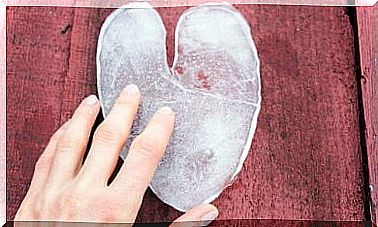Touchy People: Anger As A Form Of Communication

Touchy people are addicted to a persistent anger. Banging the table, slamming doors, yelling and even tantrums… These people don’t know how to communicate without raising their voices. They quickly lose control and you should not contradict them. But behind this difficult behavior is often a weak person who uses anger as a defense mechanism.
We’ve all lost control once or twice. So we know what it feels like when the anger takes over. Almost without knowing what is happening, we then explode in the least appropriate and least tactful way. But the important aspect of these experiences is that they provide us with some useful lessons. Whether we like it or not, we learn the importance of being assertive. We learn that assertiveness is essential when dealing with complex situations that challenge our emotional maturity.
On the other hand, there is another crucial aspect that is important to consider. Even now, we still don’t really understand anger. But what we can say is that we should avoid touchy people in our daily lives. Because that is necessary to protect our emotional balance and health.
Who is that person who is always so touchy?
But nothing is more essential than understanding. We look at the psychology of this phenomenon. Because in this way we can understand who is hiding behind that angry child, that family member with a bad temper and that boss who constantly falls prey to frustration. There hides a person who does not know how to use another form of language. They are people who are at war with themselves. They don’t know what to do or where all that explosive anger and negativity is coming from.

Why do touchy people behave that way?
The French have a very good word for this form of passive-aggressive behavior and for people who use anger to communicate. They use the expression ‘ sous-entendu’. This means something like ‘what is understood under the skin or what is under the skin’. What’s under the wolf’s fur that causes him to use this form of destructive emotional intensity? The answer couldn’t be simpler: there is another wolf, a wounded wolf.
Characteristics of touchy people
Let’s take a look at some of these features. Because they can explain this kind of dynamic in touchy people.
- Excessive fear. People who react with anger with anger often have a lot of fear. As children, these people panicked at the slightest. To every stimulus they reacted with intense fear and anxiety. As an adult, this persistent distaste for anything beyond their control turned into anger. Anger is nothing more than a defense mechanism they use to react to everything and everyone.
- Anger in response to all negative emotions. A person with this personality profile cannot discern whether what they are feeling is sadness, disappointment, fear, anxiety, surprise, or shame. All these emotions are understood and translated in the same way: in anger.
- Anger is an accumulating problem. When an emotion is not translated into something or is not understood and the person does not deal with it, that emotion accumulates. Often touchy people carry decades of frustration with them. That is why the most important issues function as stimuli and cause the anger they contain.
- Anger and paranoia. This relationship is as problematic as it is remarkable. Touchy people are scarred by feelings of fear and cramped emotions that they don’t understand. This anger resides deep within the touchy person and creates overly suspicious behavior. Everything is a threat to them. They distrust everyone. In addition, they think that others are there to hurt or ridicule them. This creates very difficult situations.

How do you learn to deal with your anger?
Touchy people do not have a good quality of life. From a clinical standpoint, it is an issue that cannot and should not be ignored. Studies also show that these people are more prone to heart problems, strokes, breathing problems, poor physical defenses… Anger can also create insurmountable distances from the people we love.
For this reason, these people often have what is known as shifted anger. They may be angry with something or someone. But in the end they project all their negative energy onto the people who deserve it least: their children or their spouse… It is important to provide them with tools and strategies. Because that way they can see that anger is not an acceptable way to communicate. Assertiveness, on the other hand, allows you to handle situations in a better way.
Strategies for Dealing with Anger
Let’s look at some simple strategies. They can help us handle this emotion much better:
- We need to understand what anger is and what its purpose is. Essentially, it is a response our brain sends to attack or flee when threatened. It is a purely biological and physiological expression.
- The second step is learning how to recognize your own emotions and understand what motivates them. Do I feel sadness? What is the origin of this feeling? If what I experience is shame, what caused this feeling?
- breathing techniques. One way to normalize anger and rage that affects our bodies and minds is to learn to relax. You learn to breathe and focus on those tense muscles and your accelerated heart rate. These techniques will help you slow them down and relax. Because only when we have calmed down can we think better and react in a more appropriate way.
- Replace anger with assertiveness. Another essential goal for touchy people is to learn to communicate in an assertive way. Instead of using anger as a language, they should work on a way to make assertive communication their best tool.

In conclusion, we would like to look at one last aspect. Sometimes a touchy person doesn’t just use verbal abuse. But often physical violence also becomes a recurring problem. Do not hesitate to intervene in these cases. Take measures to protect yourself if you are the victim of violence. Also, take action if you are the one creating this dynamic.









